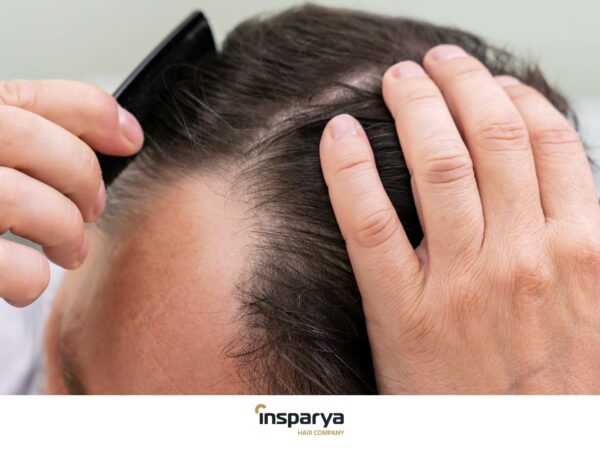
Signs that point to future hair loss
Right now, we have magnificent, long hair that’s strong and shiny. However, it’s important to take care of it every day and keep an eye on possible signs of hair loss in the future. Normally, hair loss begins with minor signs, but we shouldn’t be too confident.
Hair health is a concern for the vast majority of society. Often, though, an individual is not aware that they suffer from alopecia until it reaches an advanced stage and is often irreversible.

Four signs of future hair loss
Hair loss. We’re losing hair every day, so it may not seem like something serious. However, we must be attentive to the amount that’s falling out. It is important to differentiate between types of loss; that can point to androgenic alopecia or telogen effluvium. Androgenic alopecia is determined by genetics; it affects the top of the head, and hair loss is usually slower and more gradual. Unlike androgenic alopecia, telogen effluvium occurs primarily in women and affects the entire head. In this case, hair loss is faster. Telogen effluvium is usually reversible and may be due to a lack of vitamins or minerals, thyroid disorders, or stress, so it is important to monitor these variables.
Dermatitis or eczema on the scalp. Seborrheic dermatitis is a common, chronic dermatological disease that consists of inflammation with peeling on the scalp. Symptoms are usually worse in winter, and if left untreated properly, it can lead to hair loss, though this is not common. The problem occurs when the scalp is suffering from a hydro-lipid imbalance that prevents proper completion of the hair’s life cycle. Over time, this dermatitis can lead to more or less severe alopecia.
Oily hair
While oily hair is not a symptom of alopecia, remember that alopecia is often preceded by unusually oily hair, especially in the early years of this disease. An oily scalp is a symptom of an aberration in the proper functioning of the region, so if it is not treated correctly, this can end up causing the new hair to fall out prematurely.

Thinning hair is another sign that something isn’t right in terms of hair health. This symptom involves thinner hair that takes longer to grow and has less volume. It is usually associated with androgenic alopecia, so it can affect both men and women. When these symptoms are diagnosed in time, it is possible to prevent loss or delay it with medical treatments like hair mesotherapy or Platelet-Rich Plasma (PRP). However, these treatments will not lead to new hair growth once it has already fallen out, but they will make the existing hair stronger and more resistant, preventing and delaying alopecia. In chronic or advanced cases, the only solution is a hair transplant. At Insparya, thanks to the technology developed by our research department, the Dual Extraction Device and our unique technique make it possible to transplant up to 4,000 follicular units in a single session, which is approximately 10,000 hairs in all.






